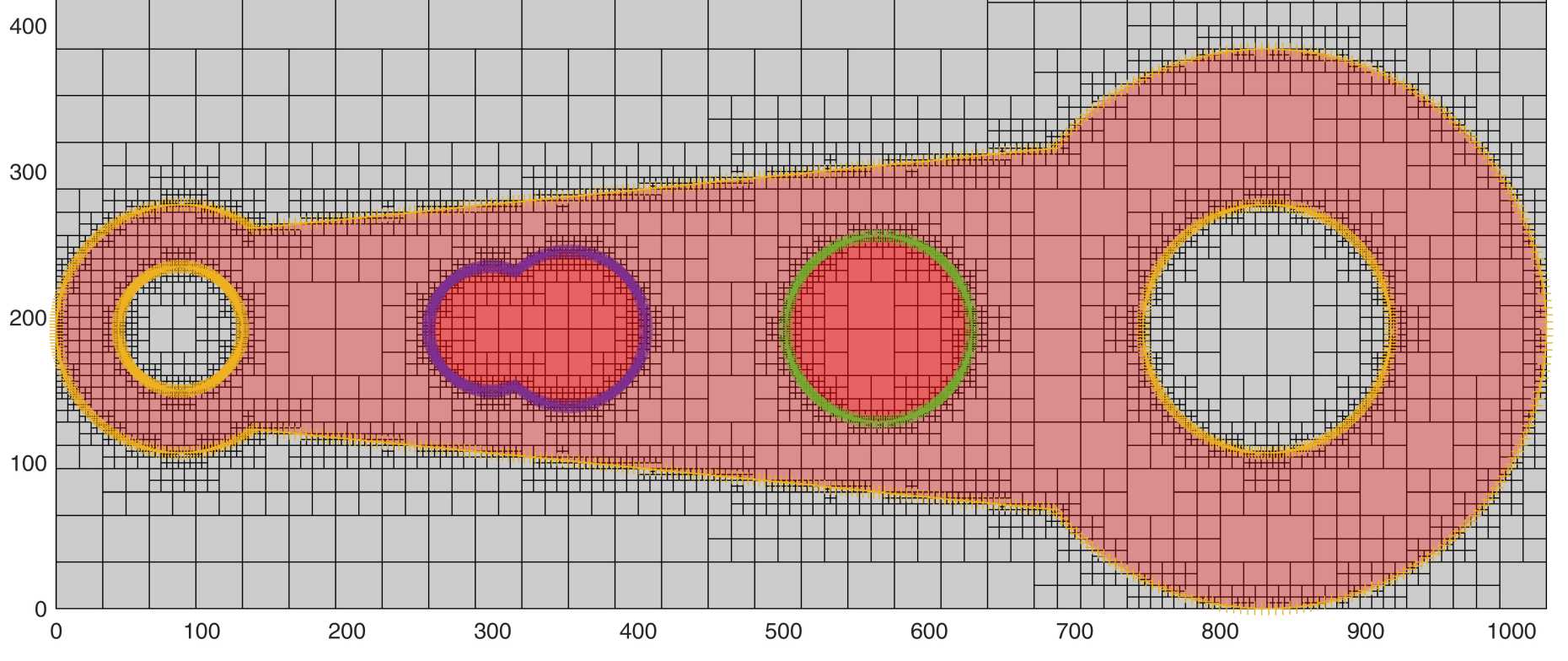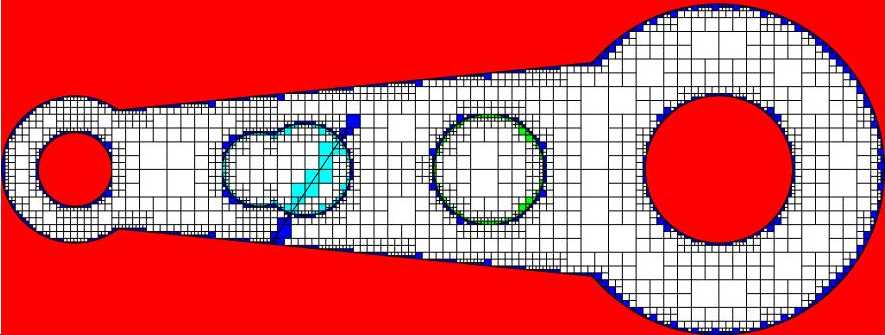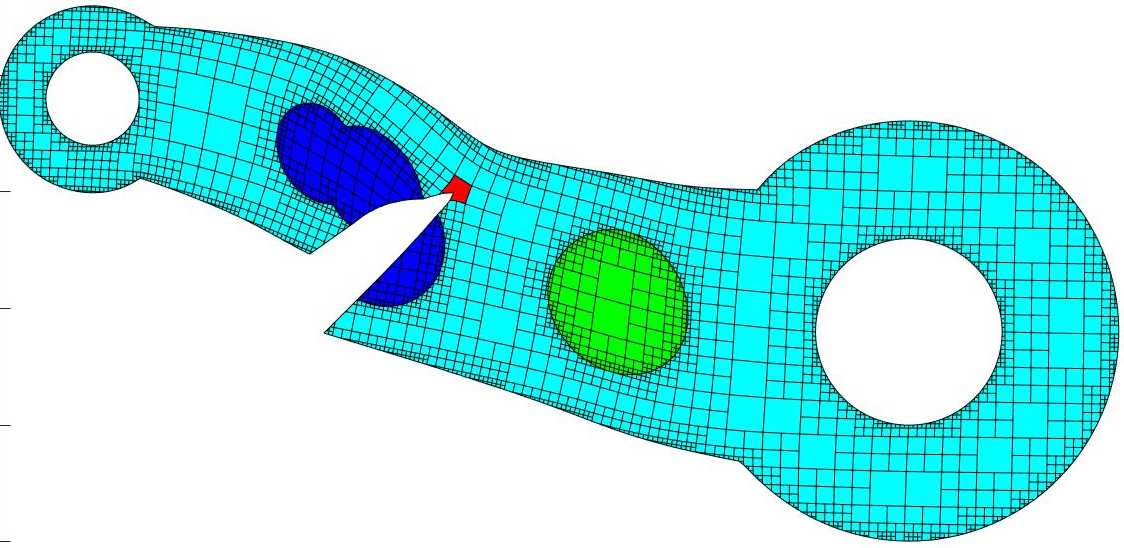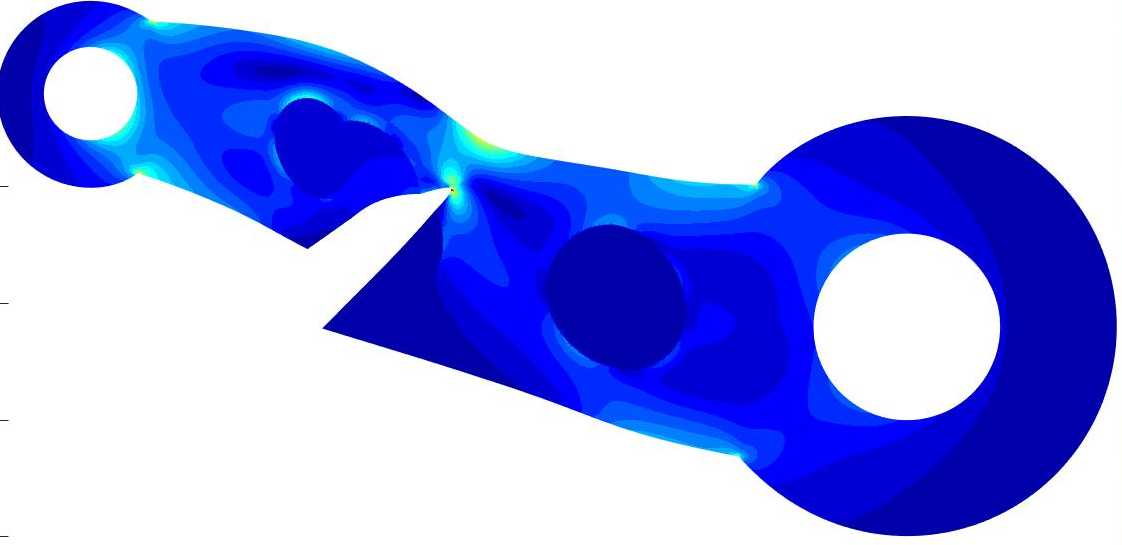Quadtree based SBFEM analysis
Two different types of quadtree decompositons are considered. The first type, which expects pictures as input, is related to image decompositions and compression algorithms, whereas the second type, which expects geometric features and primatives as input, allows for a CAD-like description of the structure.
Image based quadtree decomposition
The user supplies a grayscale image as input. It is then padded until it is square and the pixels align with powers of 2. Subsequently, it is divided into four equal parts (hence "quad") by bisecting its height and width. If any of these four resulting blocks contain pixels whose grayscale values vary by more than a user defined value, then that block is again divided into four equally sized blocks. This procedure is continued until every block contains only uniform grayscale values. The well known issue of hanging nodes between adjacent blocks of different size does not affect SBFEM, since at its core it is a polygon based method. In fact, this is heavy exploited in SBFEM to increase computational efficiency: By balancing the quadtree, only a limited amount of possible polygon orientations exist, which can be easily precomputed and retrieved as necessary.

Feature based quadtree decomposition
Often, we siwh to analyse a structure with a well defined geometrical description. Hence, the ability to describe a system in a CAD-like fashion, by building it using geometry primatives, i.e., polylines and ellipses, is highly sought after. Based on the user provided features and requested boolean operations, the domain is constructed utilizing polygon clipping. The maximum amount of allowable polygon points per block serve as the criterion for block subdivision. The domain along with weak and strong discontinuities are cropped from the surrounding decomposition resulting in blocks being slip into two irregular polygons along the path of interfaces. Double nodes are inserted along the crack path and perturbed in accordance with the signed distance function of the crack.



